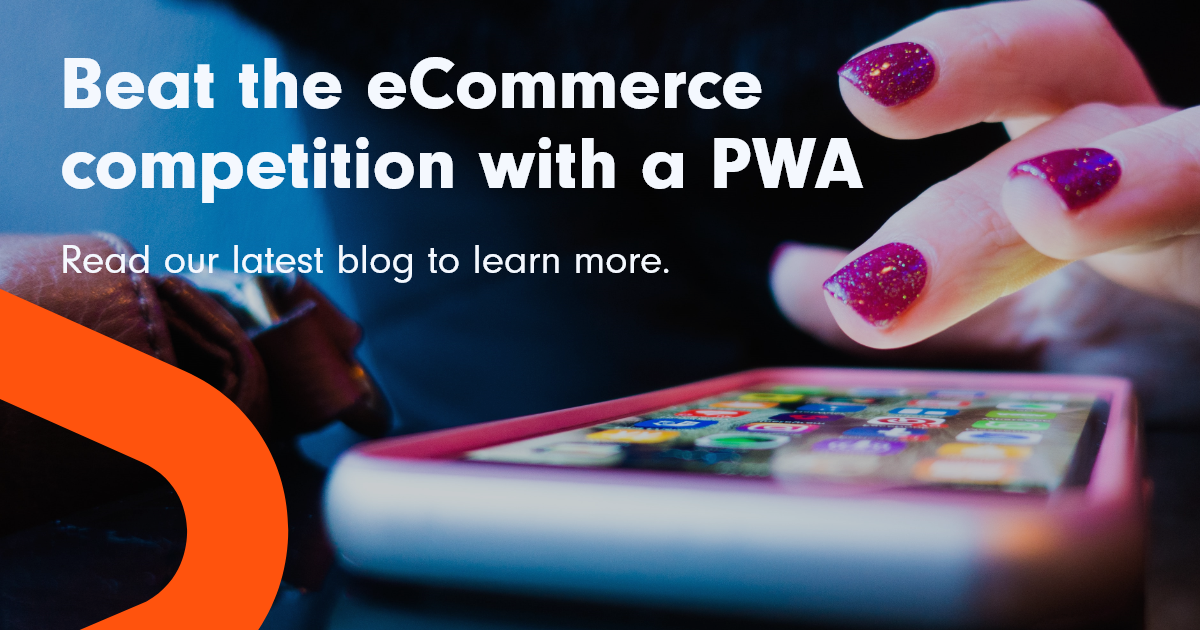
Customer expectations are at an all-time high and it’s becoming more and more challenging for brands to meet and exceed them. It was predicted in 2020 that customer experience would outweigh price and product when deciding whether to purchase, with 86% of buyers ultimately willing to pay more for a better customer experience. The need to develop effective customer experience strategies is intensifying. By improving and optimising the customer experience, you’re likely to convert more shoppers into customers and boost loyalty and retention, so how do we give consumers what they want?
Some of the common frustrations that we have heard and have encountered as consumers include a different shopping experience across devices, not being able to find the products with ease, slow and cumbersome websites, and poor re-engagement and communication. Today’s consumers want to get from A to B on the path of least resistance. It’s all about speed, ease of use and consistency, which makes for a great buying experience – in fact, 74% of consumers say they are at least somewhat likely to buy based on experiences alone.
Googles commitment to CX
Google has shown a commitment to progressing customer experience over the last 10 years. Back in 2010, Responsive Web Design (RWD) introduced the idea that website design and development should respond to the user’s behaviour and environment based on screen size, platform, and orientation. In 2015, there was a change of focus towards mobile experience and quality content; shortly after in 2016, PWAs were introduced as a new web development standard, making mobile user experience the centre of all attention. Google first started to use page speed to calculate mobile search rankings in 2018, and in 2019 Google started to predominantly use the mobile version of content for indexing and ranking. Finally, earlier this year we saw the core web vitals and page experience update.
This makes one thing very clear; mobile experience is key. If you are not providing a positive mobile experience, you’re putting your business growth in danger. In recent years, mobile usage has risen to the point where people now spend twice as much time on mobile devices as they do on desktop. It’s likely that you have seen similar trends within your site analytics. But with this boom in usage comes expectation, as customers are demanding consistently great experiences on mobile – this is where PWA’s can deliver.
So, what are Progressive Web Apps (PWAs)?
To put it simply, PWAs are mobile optimised websites, that appear to the user like a native mobile app, a hybrid of regular websites and mobile apps. They are developed to behave and feel just like native mobile applications, whilst running in web browsers. Creator, Google engineer Alex Russel said that “they’re websites that took all the right vitamins”.
Despite having app-like features, it is important to understand that PWAs aren’t a direct alternative to native apps, but rather an enhancement of existing web technology. When you build a PWA, you are building a single website that runs on every device. That is the primary reason why Google, Microsoft and other companies are pushing Progressive Web Applications so that businesses are encouraged to create better cross-device experiences.
PWAs help to improve customer experience and reduce bounce rates. They load immediately, respond instantly to customer interactions and are rich with UI on all devices. As well as being reliable, fast, and engaging, the main characteristics of a PWA include:
- Consumers can find and download your PWA through search engines.
- Users can add it to their home screen, just like a native web app.
- The PWA can be shared across different platforms with a URL.
- Network independent. Any interruption due to poor connectivity can cause shoppers to lose purchase momentum and reduces the likelihood of them returning to complete their order. The app works behind the scenes to retrieve and store information so consumers can shop offline or with poor connection.
- Progressively enhanced. The application will work on older and newer browsers.
- Re-engageable. Regain and maintain engagement by sending consumers push notifications with stock updates, offers and abandoned basket reminders.
- Responsively designed. Shoppers can access the app on any device with a screen and a browser.
- Connections between the user, the app and your server are secured against any third parties trying to access third party data.
These features can create a compelling, highly flexible offering for your customers. These benefits lead to higher levels of customer engagement and overall performance, increasing conversion rate and revenue growth.
The impact of PWAs
Google reports that the average PWA increases conversions by 52%. If you’re considering a PWA, think about the metrics you’d like to track. Here are some of the key statistics from Google’s mobile engagement report:
- The average bounce rate of a PWA is 42% lower than a similar mobile website.
- Mobile sessions on PWAs are increased by nearly 80% on average.
- Brands using PWAs notice that page views increase by nearly 134%.
- Overall engagement is 137% higher.
- The average load time for PWAs is just 2.75 seconds, approximately eight times faster than an average mobile landing page.
There are several tools and techniques available to help you track performance, such as Lighthouse and the Chrome User Experience Report. Some of the key metrics that you will be looking at are conversion rate, sessions per user and the average session duration, but this differs from business to business.
PWAs have lots of benefits and have come just at the right time. With 9 out of 10 businesses competing mainly on customer experience, it’s the brands that take customer experience seriously that will stand out and win loyal customers over. PWA technology enables brands to unify and streamline their clients’ experience across all touchpoints. Progressive Web Apps will inevitably drive a shift in user expectations and there are a few fundamental considerations that are key to success. Speak to a member of our team today to learn more about how PushON can help you to create your PWA.








.png)
